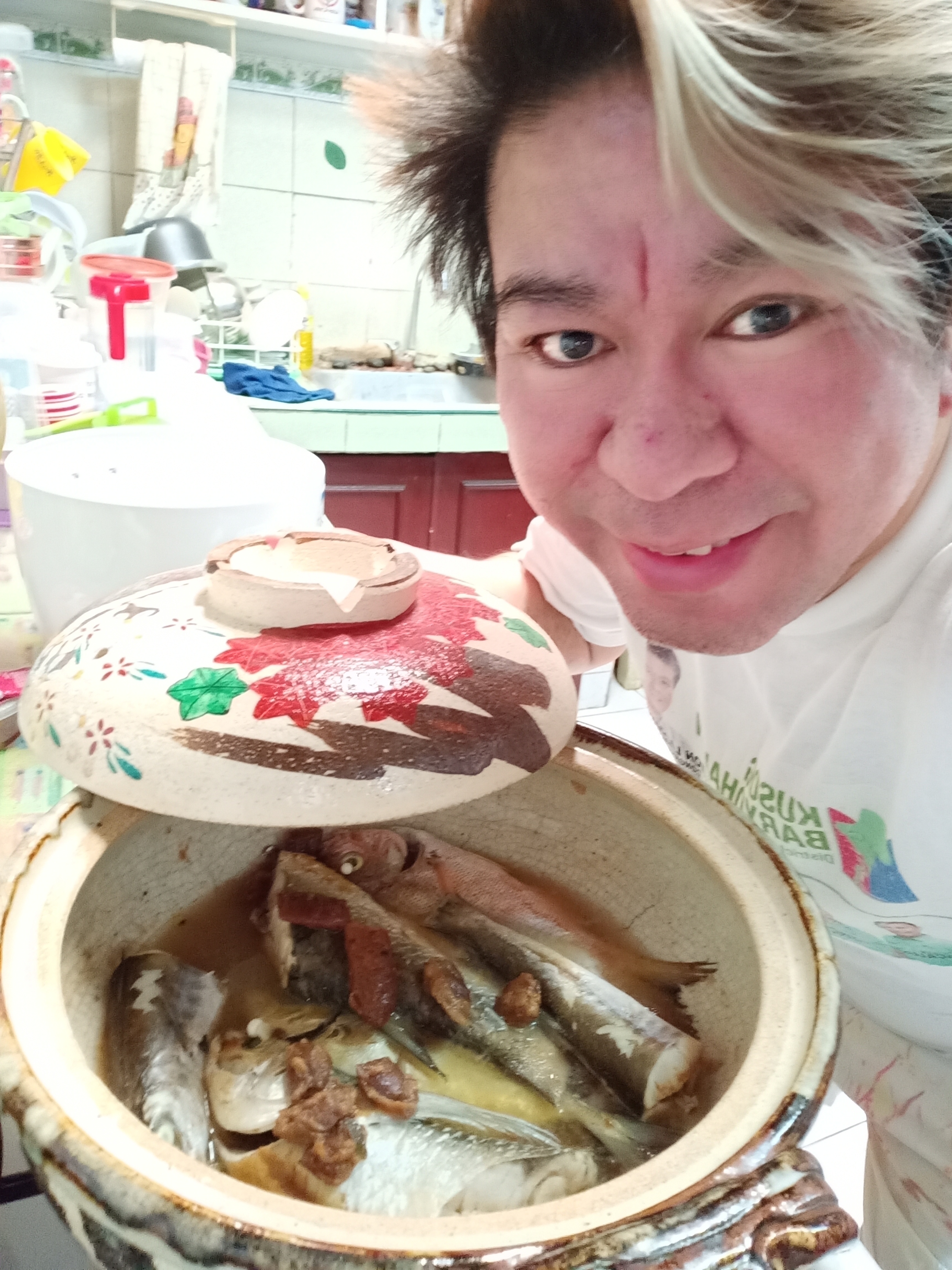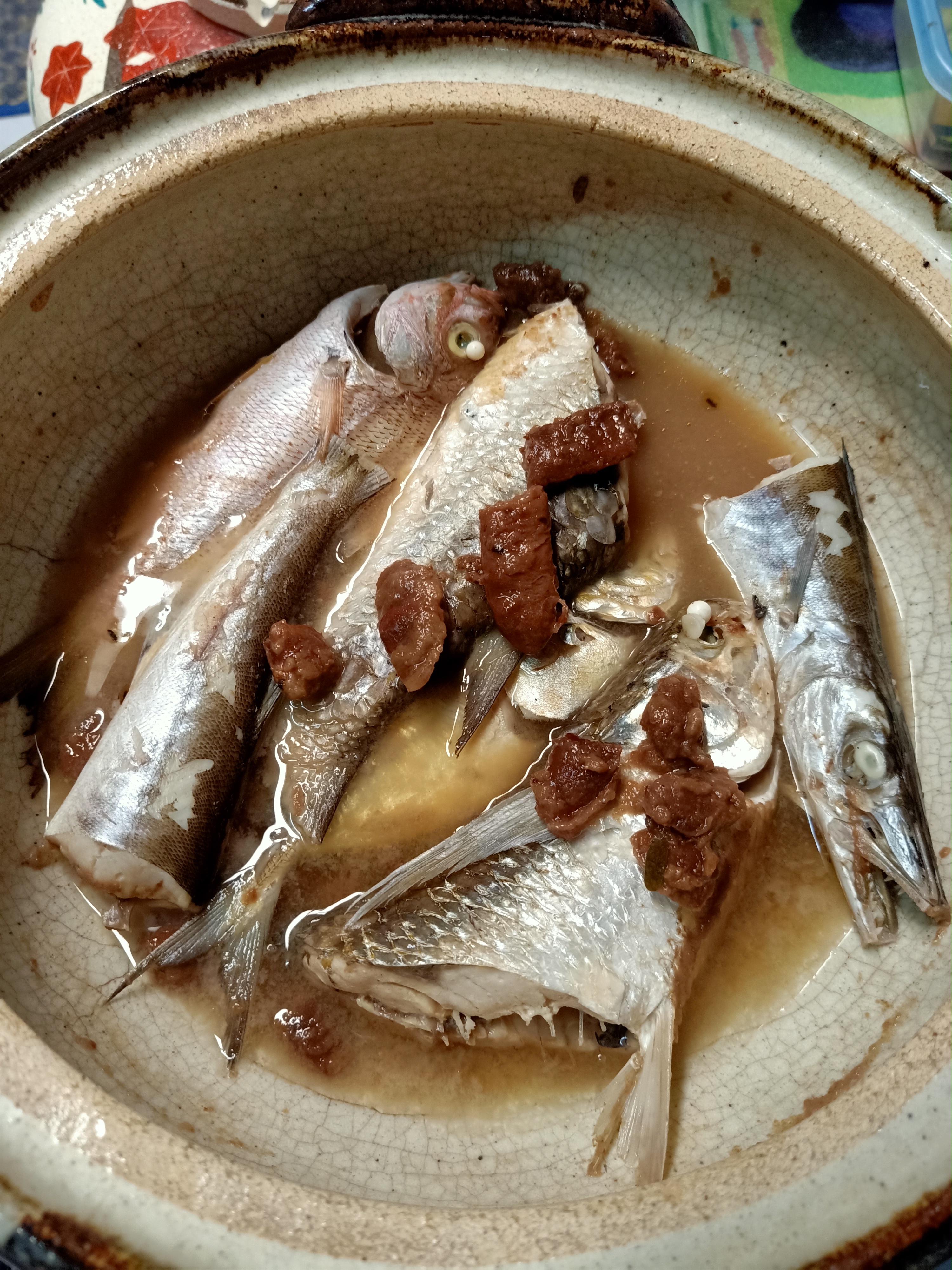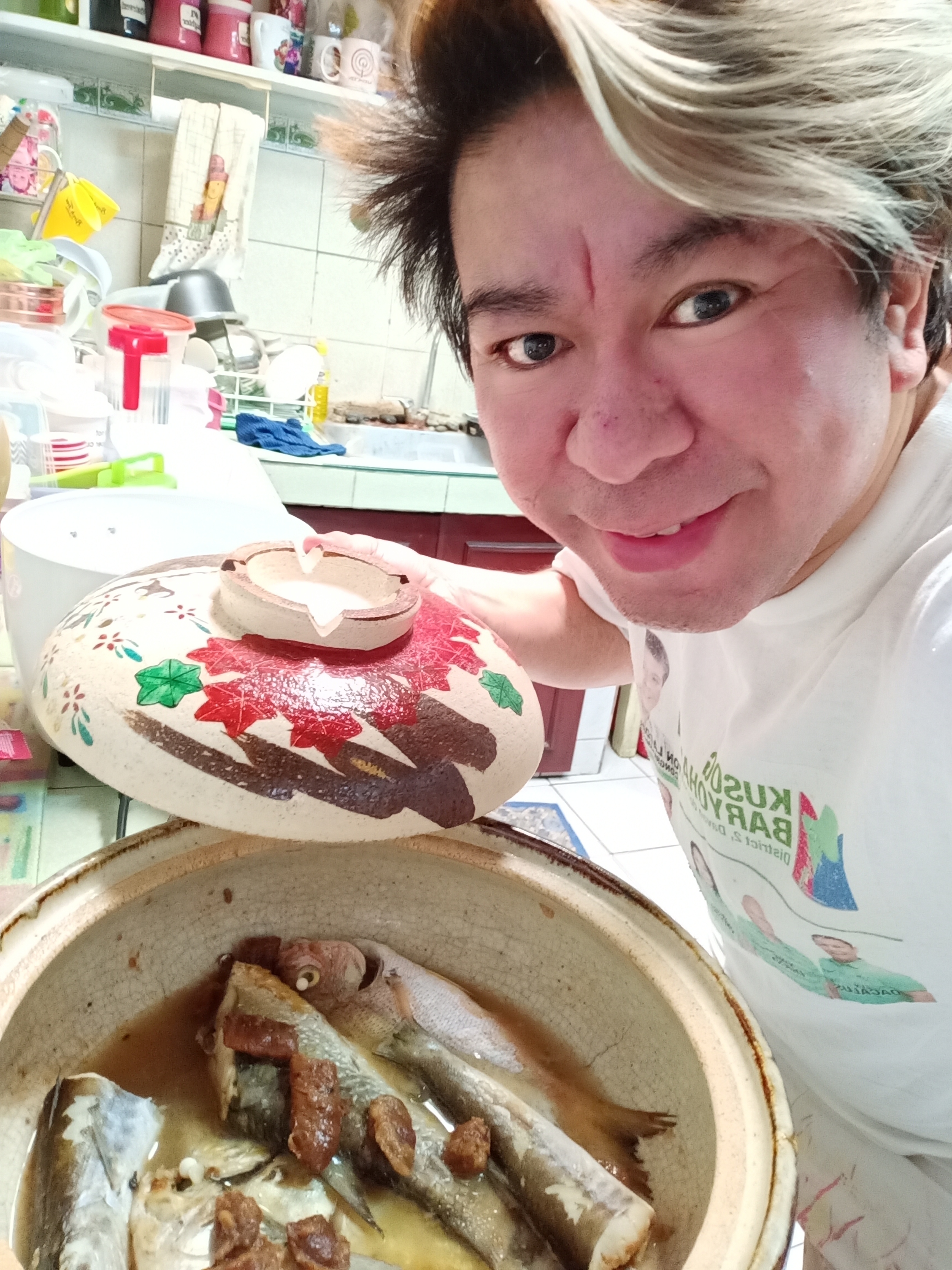Cooking "Paksiw sa Palayok" a traditional Filipino dish in Clay Pot using three local fish species !

A "Palayok" is a clay pot or earthenware used as the traditional cooking vessel for food or as food preparation container in the Philippines. Palayok is a Tagalog word; in other parts of the country, especially in the Visayas, it is called a kulon. Neighboring Indonesia and Malaysia refer to such vessel as a periuk. Local artists usually paint a few drawings and colors outside the clay pot to make it more appealing in the kitchen than the usual smoked dark orange color.

It is believed that food tastes better when cooked in a 'palayok' or clay pot. The palayok is made of earthenware, a porous ceramic material. This allows steam from cooking to evaporate out of the pores in the earthenware. Juices from the cooking food would not begin to burn until all the water has evaporated, after which the food is thoroughly cooked. Since ceramic does not transfer heat as much as metal, cooking in a palayok entails a longer time and a higher temperature than would normally be used with metal cookware.

The palayok should not be cleaned using household detergents, as the porous material would easily imbibe chemicals in the detergent that would later impart unwanted flavors in the food during cooking. It is instead cleaned by soaking in warm water and when the detritus has sufficiently softened, by scrubbing with salt.
For this article, we will be cooking three spcies of fishes in one recipe called "Paksiw". We will just add water with vinegar, soy sauce ,ginger , garlic, salt , pepper and the secret ingredient which is the "Tipe" or tamarind balls available in the local narket that will surely add an extra heavenly sour taste to die for !

The three fish species are the following:

This mullet or 'Banak' is well known throughout the country. They are most common in the Cagayan River of northern Luzon, however they are also most likely present all around the country in estuaries and rivers. These plant feeders like most mullet species are a challenge to catch on hook and line. Anglers targeting this species and others are likely to have success fly fishing with small bread, algae, and shrimp pattern.
.jpeg)
"Tursilyo" or baby Barracudas, With a large mouth and menacing teeth, these are feared when they get to a bigger size. Apparently, Barracudas like to watch people that are underwater, curious what they are up to. They are commonly seen at the edge of reefs, traveling in large schools. They taste great fried or paksiw.
.jpeg)
The third fish is known locally (in the Tagalog regions) as Mamale or Mamali. These fish normally school in bays, and other muddy or sandy bottom coastal waters.

Happy Cooking with Paksiw in your Earthenware !
Congratulations @eagleriggs! You have completed the following achievement on the Hive blockchain and have been rewarded with new badge(s) :
You can view your badges on your board And compare to others on the Ranking
If you no longer want to receive notifications, reply to this comment with the word
STOPDo not miss the last post from @hivebuzz:
Support the HiveBuzz project. Vote for our proposal!
How much is a kilo of banak these days?
Wow! Aga kong nag laway at naku hang ganda ng earthen ware mo or palayok, type ko.
May painting ni Amorsolo hahaha
Ang ganda ng palayok, sarap nyan
Super sarap ng food na luto sa palayok
Wow, sarap hehe. Ingat lang po sa pagkain, alam mo na 😅.
Napanood ko po pala yung sa UNTV video nyo na tungkol sa mild stroke, pinapanood ko sa wife ko, naging concious po kame sa food after mapanood yon. Baka pwede po kayo share insights nyo po regarding po don in your next post here sa Hive. Nakakatulong po talaga siya naging aware kame. God bless po 😊❤🍯
Salamat sa Dios. May awa ang Dios .